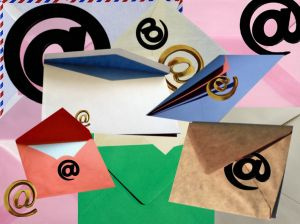If you wanted to be a professional actor, you’d go and watch a great performer. If you wanted to be a professional photographer, you’d spend time looking at beautiful pictures. And if you’re going to send email as part of your profession, you’re going to need to read lots of emails.
You’re going to have to opt-on to receive your competitor’s emails, and you’re going to have to subscribe to a host of other newsletters from a wide range of senders.
The more email marketing you read, the easier it will be for you to produce your own copy. As you’re reading those emails though, you should be looking at four things:
1. The Subject Line
The subject of the email is obviously the most important element that determines views. But according to email expert Dela Quist, even emails that aren’t opened can still have an effect, reminding leads that the company is still there and nudging them to get in touch.
As you’re scanning the Subject lines in your inbox, pay attention not just to the emails you read but also to the effect the Subject lines alone have on your relationship to the sender. Do they raise your confidence, build trust, recall the brand — or make you look away?
2. The From Line
The Subject line is always visible in the inbox but so is the From line, and it’s no less important at prompting subscribers to read. While the subject line might make them curious, they’ll only open if they trust the person who’s writing to them.
Like the Subject line, the From line can be written in all sorts of different ways. You can give your newsletter a name, use the name of your company or write from a named individual. All of those approaches can work but the success rate depends on the content and the company. As you’re reading your subscriptions, pay attention to who’s writing the emails you choose to open.
3. The Format
Marketing emails can look like flyers, read like newsletters or arrive entirely unformatted, like a personal email. Sometimes, the same company will send all three types, allowing a small business to both maintain a personal and trusted connection to the reader while still leaving room to push special offers and time-limited bargains.
The From lines and Subject styles in each of those cases might be different — as might the response rates — but it’s only by testing each of them that you can tell which will be best for you and in which contexts. That’s what the senders of the emails you read are doing.
4. Did You Act on It?
Even with the “Nudge Effect,” the most important test for a piece of email marketing is whether the subscriber took action. You might be reading those emails to see how they’re written and laid out but if the copy is good, it should be tempting you to place orders too.
Producing persuasive email marketing isn’t always easy. But when you make use of the huge amounts of free samples your competitors want to give you, it gets a little easier.
Main image courtesy of RambergMediaImages
